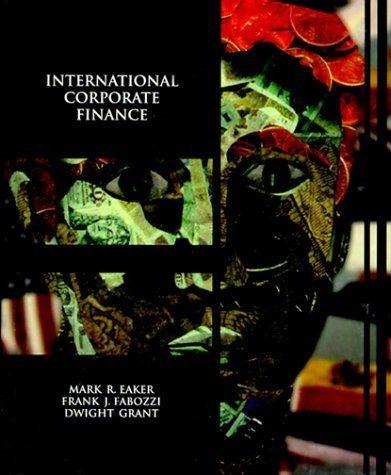Need Solutions ASAP plz
Three engineers who worked for Mitchell Engineering, a company specializing in public housing development, went to lunch together several times a week. Over time they decided to work on solar energy production ideas. After a lot of weekend time over several years, they had designed and developed a prototype of a low-cost, scalable solar energy plant for use in multifamily dwellings on the low end and medium-sized manufacturing facilities on the upper end. For residential applications, the collector could be mounted along side a TV dish and be programmed to track the sun. The generator and additional equipment are installed in a closet-sized area in an apartment or on a floor for multiple-apartment supply. The system serves as a supplement to the electricity provided by the local power company. After some 6 months of testing, it was agreed that the system was ready to market and reliably state that an electricity bill in high-rises could be reduced by approximately 40% per month. This was great news for low-income dwellers on government subsidy that are required to pay their own utility bills. With a hefty bank loan and $200,000 of their own capital, they were able to install demonstration sites in three cities in the sunbelt. Net cash flow after all expenses, loan repayment, and taxes for the first 4 years was acceptable; $55,000 at the end of the first year, increasing by 5% each year thereafter. A business acquaintance introduced them to a potential buyer of the patent rights and current subscriber base with an estimated $500,000 net cashout after only these 4 years of ownership. However, after serious discussion replaced the initial excitement of the sales offer, the trio decided to not sell at this time. They wanted to stay in the business for a while longer to develop some enhancement ideas and to see how much revenue may increase over the next few years. During the next year, the fifth year of the partnership, the engineer who had received the patents upon which the collector and generator designs were based became very displeased with the partnering arrangements and left the trio to go into partnership with an international firm in the energy business. With new research and development funds and the patent rights, a competing design was soon on the market and took much of the business away from the original two developers. Net cash flow dropped to $40,000 in year 5 and continued to decrease by $5000 per year. Another offer to sell in year 8 was presented, but it was only for $100,000 net cash. This was considered too much of a loss, so the two owners did not accept. Instead, they decided to put $200,000 more of their own savings into the company to develop additional applications in the housing market. It is now 12 years since the system was publicly launched. With increased advertising and development, net cash flow has been positive the last 4 years, starting at $5000 in year 9 and increasing by $5000 each year until now. It is now 12 years after the products were developed, and the engineers invested most of their savings in an innovative idea. However, the question of "When do we sell?" is always present in these situations. To help with the analysis, determine the following: The rate of return at the end of year 4 for two situations: (a) The business is sold for the net cash amount of $500,000 and (b) no sale. The rate of return at the end of year 8 for two situations: (a) The business is sold for the net cash amount of $100,000 and (b) no sale. The rate of return now at the end of year 12. Consider the cash flow series over the 12 years. Is there any indication that multiple rates of return may be present? If so, use the spreadsheet already developed to search for ROR values in the range plusminus 100% other than the one determined in exercise 3 above. Assume you are an investor with a large amount of ready cash, looking for an innovative solar energy product. What amount would you be willing to offer for the business at this point (end of year 12) if you require a 12% per year return on all your investments and, if purchased, you plan to own the business for 12 additional years? To help make the decision, assume the current NCF series continues increasing at $5000 per year for the years you would own it. Explain your logic for offering this amount







